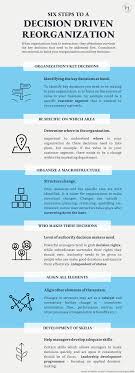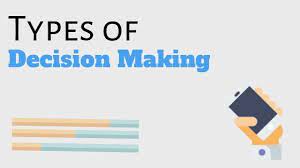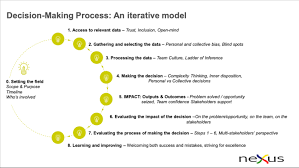6 Essential Tips for Making Strategic Decisions
- Gather relevant data and information
- Analyze the situation
- Consider different options
- Evaluate risks and rewards
- Create an implementation plan
- Monitor progress regularly
Gather relevant data and information
When it comes to making strategic decisions, one of the most important tips is to gather relevant data and information. This may seem like an obvious step, but it is often overlooked or rushed through in the decision-making process.
Gathering relevant data and information is crucial because it allows you to make informed decisions based on facts rather than assumptions or guesses. By collecting data, you can identify trends, patterns, and potential obstacles that may impact your decision.
When gathering data, it’s important to ensure that the information is relevant to the decision you are making. This means that you need to focus on collecting information that directly relates to your decision and ignore any irrelevant data that may skew your results.
There are many sources of data and information available, including market research reports, customer feedback, financial statements, industry publications, and competitor analysis reports. It’s important to use a variety of sources to ensure that you have a well-rounded view of the situation.
Once you have gathered all of the relevant data and information, it’s important to analyze it carefully before making your decision. Look for patterns and trends in the data that can help guide your decision-making process.
In conclusion, gathering relevant data and information is a critical step in making strategic decisions. It allows you to make informed decisions based on facts rather than assumptions or guesses. So take the time to gather as much relevant data as possible before making any major decisions – your business will thank you for it!
Analyze the situation
When it comes to making strategic decisions, one of the most important tips is to analyze the situation thoroughly. Analyzing the situation means taking a closer look at all of the factors that may impact your decision, including both internal and external factors. By doing so, you can gain a better understanding of the current state of affairs and make an informed decision based on the available information.
When analyzing the situation, it’s important to consider both quantitative and qualitative data. This may include financial data, market trends, customer feedback, and other relevant information. You should also take into account any potential risks or challenges that may arise as a result of your decision.
By analyzing the situation carefully, you can identify any potential opportunities that may be available to you. This can help you to make a decision that is not only effective but also beneficial for your organization in the long run.
In addition to analyzing the situation itself, it’s also important to consider how your decision will impact other stakeholders involved. This may include employees, customers, shareholders, and others who may be impacted by your decision. By considering their needs and concerns as well as your own goals and objectives, you can make a more well-rounded decision that takes into account all of the relevant factors.
In conclusion, analyzing the situation is an essential step in making strategic decisions. By doing so carefully and thoughtfully, you can gain a better understanding of all of the relevant factors involved and make an informed decision that is beneficial for everyone involved.
Consider different options
When it comes to making strategic decisions, it is important to consider all possible options. Sometimes, the most obvious choice may not be the best one. By considering different options, you can evaluate each one and determine which will be the most effective in achieving your goals.
One way to approach this is by brainstorming a list of potential options. This can involve gathering input from others and exploring different scenarios. It’s important to keep an open mind during this process and not dismiss any ideas too quickly.
Once you have a list of options, it’s time to evaluate each one based on its pros and cons. This can involve looking at factors such as cost, feasibility, and potential risks or benefits. It may also be helpful to weigh each option against your overall goals and objectives.
By taking the time to consider different options, you can make a more informed decision that takes into account all relevant factors. This can help you avoid making hasty decisions that may not be in your best interests in the long run.
In conclusion, when making strategic decisions, don’t limit yourself to just one option. Consider different possibilities and evaluate them carefully before making a final decision. With careful consideration and analysis, you can make the best decision for your organization or personal life.
Evaluate risks and rewards
When faced with making a strategic decision, it’s important to evaluate both the risks and rewards involved. This means taking the time to consider all of the potential outcomes of your decision and weighing them against each other.
On one hand, there may be significant risks associated with your decision. These could include financial risks, reputational risks, or even physical risks in some cases. You need to carefully assess these risks and determine if they are worth taking on in order to achieve your desired outcome.
On the other hand, there may be significant rewards associated with your decision as well. These could include increased profits, improved reputation, or even personal fulfillment. You need to weigh these potential rewards against the risks involved and determine if they are worth pursuing.
By evaluating both the risks and rewards of a strategic decision, you can make a more informed choice that takes into account all of the factors involved. This can help you avoid making rash decisions that could lead to negative consequences down the road.
In order to effectively evaluate risks and rewards, it’s important to gather as much information as possible about your options. This may involve conducting market research, analyzing financial data, or seeking input from others who have experience in similar situations.
Ultimately, by taking a thoughtful and thorough approach to evaluating risks and rewards in strategic decision making, you can increase your chances of success while minimizing potential negative outcomes.
Create an implementation plan
When it comes to making strategic decisions, creating an implementation plan is crucial. An implementation plan is a detailed outline of the steps that need to be taken in order to put a decision into action. It helps to ensure that everyone involved in the decision-making process is on the same page and understands what needs to be done in order to achieve the desired outcome.
Creating an implementation plan involves breaking down the decision into smaller, manageable tasks. This allows you to focus on each step individually and ensures that nothing is overlooked or forgotten. It also helps you to identify any potential roadblocks or challenges that may arise during the implementation process.
One of the key benefits of creating an implementation plan is that it helps you stay organized and focused. By having a clear roadmap of what needs to be done, you can prioritize your tasks and allocate resources more effectively. This can help you save time, money, and other valuable resources.
Another benefit of creating an implementation plan is that it helps you measure progress and track results. By setting clear milestones and metrics, you can monitor your progress and make adjustments as needed. This can help you stay on track and ensure that your decision is implemented successfully.
In conclusion, creating an implementation plan is a critical step in making strategic decisions. It helps you stay organized, focused, and on track while ensuring that everyone involved understands what needs to be done. By taking the time to create an implementation plan, you can increase your chances of success and achieve your desired outcome more efficiently.
Monitor progress regularly
One of the most important tips for making strategic decisions is to monitor progress regularly. This means keeping track of how well your plan is working and making adjustments as needed.
When you make a strategic decision, you are essentially setting a course of action that will help you achieve your goals. However, it’s important to remember that things don’t always go according to plan. External factors such as changes in the market or unexpected events can impact your progress and throw off your original plan.
That’s why it’s crucial to monitor progress regularly. By keeping an eye on how well your plan is working, you can identify areas where you need to make adjustments or changes. This could involve tweaking your approach, reallocating resources, or even changing your overall strategy.
Regular monitoring also helps you stay on track towards achieving your goals. It allows you to see whether or not you’re making progress and whether or not you need to adjust your approach in order to stay on course.
In conclusion, monitoring progress regularly is an essential part of making strategic decisions. It helps you stay on track towards achieving your goals and allows you to make adjustments as needed. By doing so, you’ll be better equipped to navigate the challenges that come with pursuing long-term success.




